10 guitar setup hacks: tips on changing strings and staying in tune
Best of 2021: Simple ways to get your guitar sounding and playing better

BEST OF 2021: Getting your getting in tune, staying in tune and intonating well is the vital first step to a good playing and tone experience. There's a number of factors involved – including how you fit the guitar strings, and taking care of the bridge and nut on your electric guitar. Here's 10 simple tips to make your life easier with tuning, strings and more.
1. Reduce nut friction
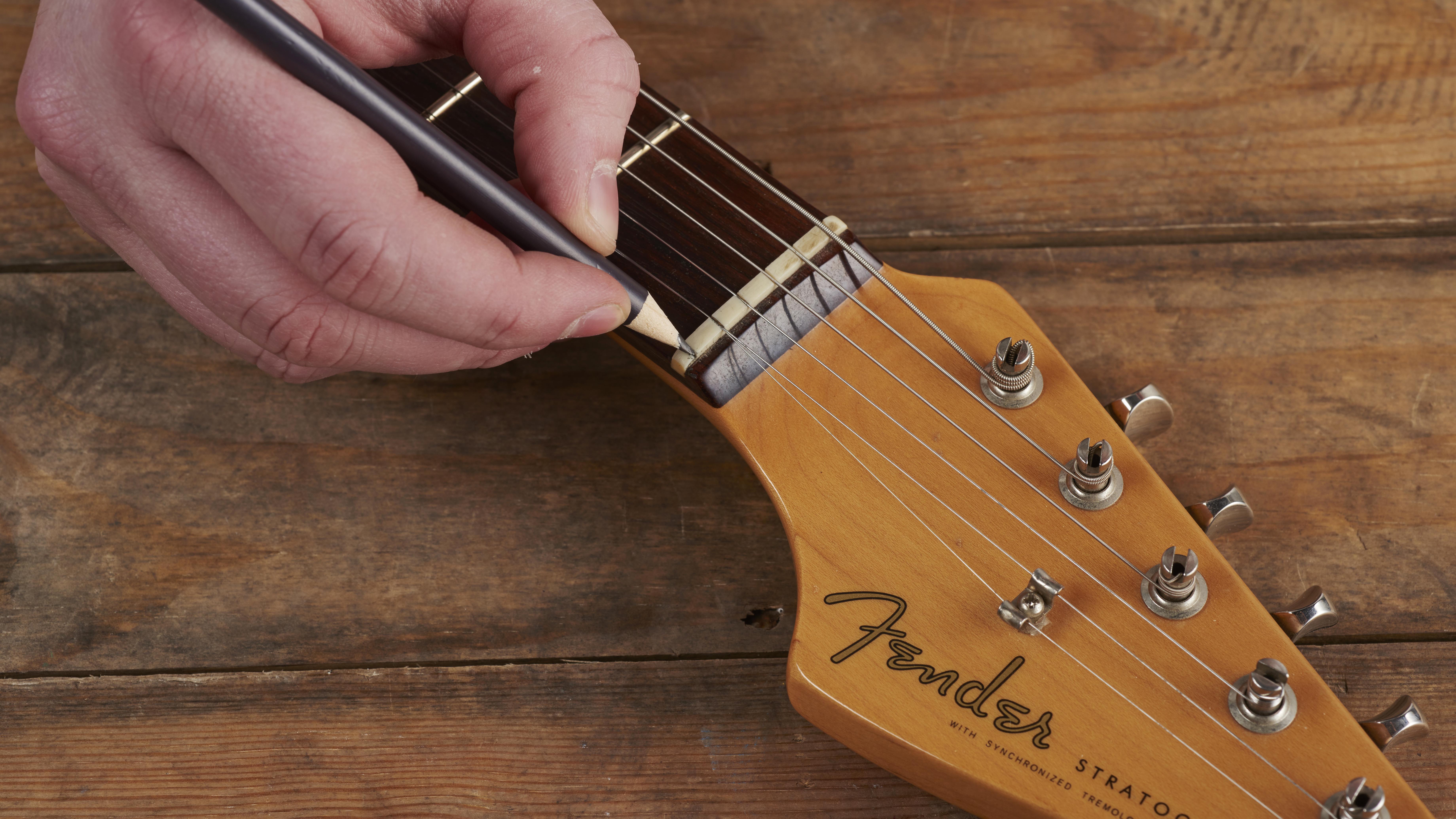
If you’re finding that a string suffers from erratic or unstable tuning, it might well be because the string is catching in your guitar’s nut. Sometimes this can necessitate the nut being filed, or even replaced, but before you get extreme, try lubricating your nut slots.
You can buy bespoke nut lubricants to do this of course, but a quicker, easier method is to use a pencil in the nut slot of the problem string – the graphite in the pencil lead should smooth up the travel of the strings on the nut and improve your tuning stability.
2. Change Strings Faster
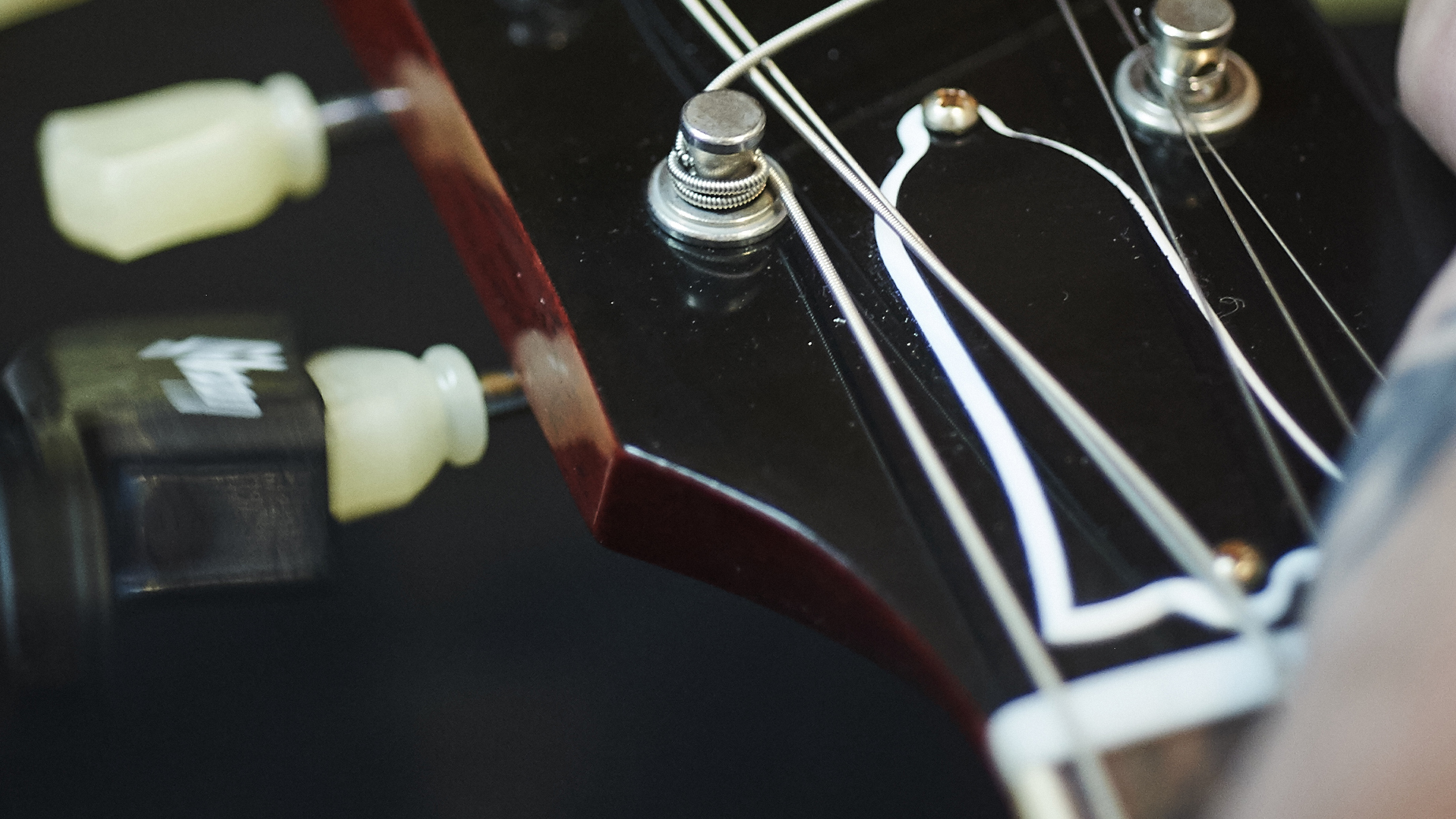
It’s a myth that removing all the strings at once damages the guitar's neck, but unless you’re oiling the fretboard or cleaning frets, loosening and snipping off all the strings at once is not the best for speed.
The more time the strings are off the guitar, the more chances there are for the neck to lose tension through movement, taking longer for it to stabilise again. Instead, restring one by one – it’s quicker, and you’ll need less time to retune.
3. Improve tuning stability
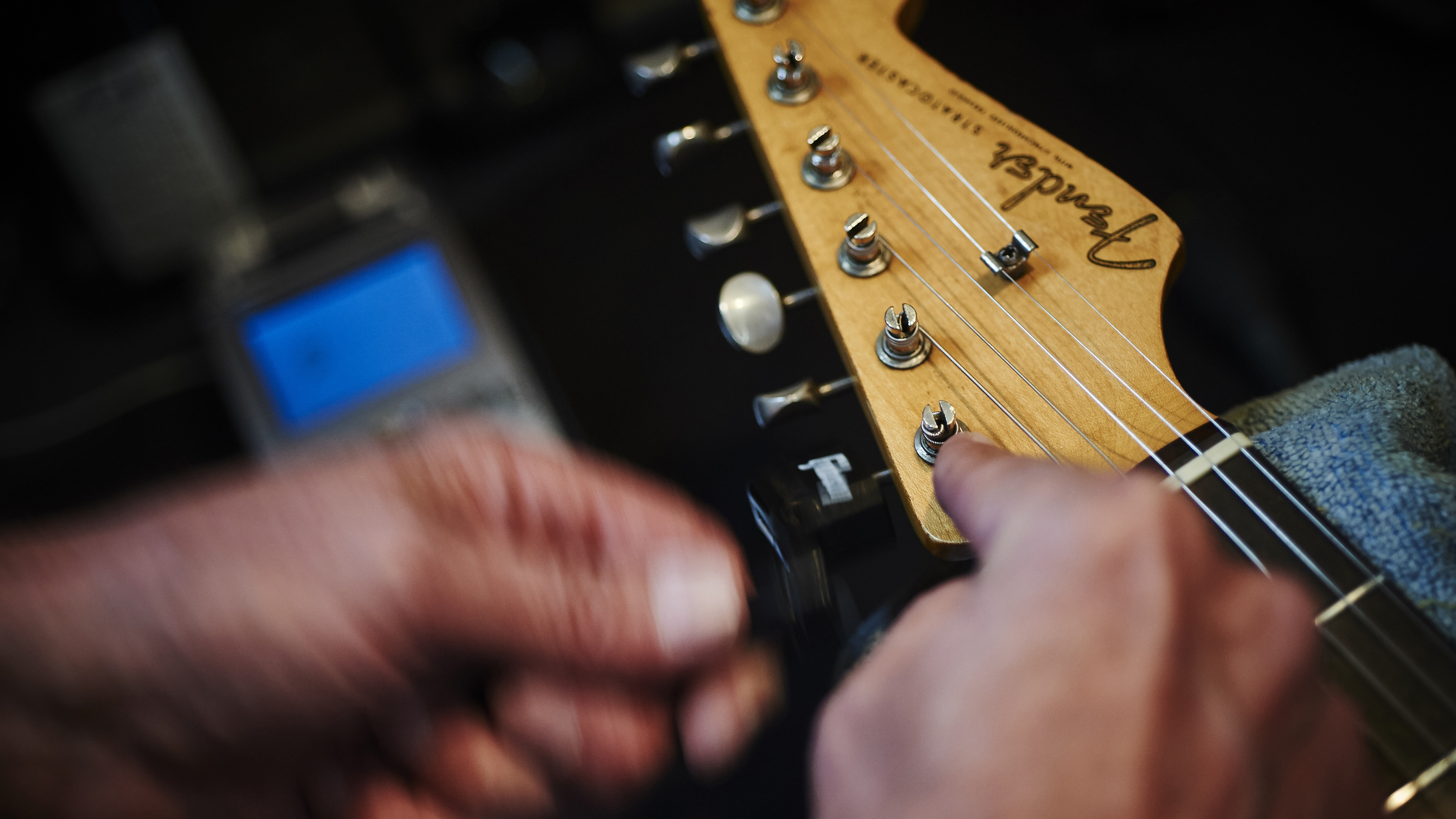
Did you know that having too much string on your tuners can cause tuning stability issues, and so can having too little? To reduce the risk of the string slipping when brought up to pitch, aim to have between two to four turns of string on each tuner post, with fewer on the wound strings.
4. Speed up Floyd Rose restringing
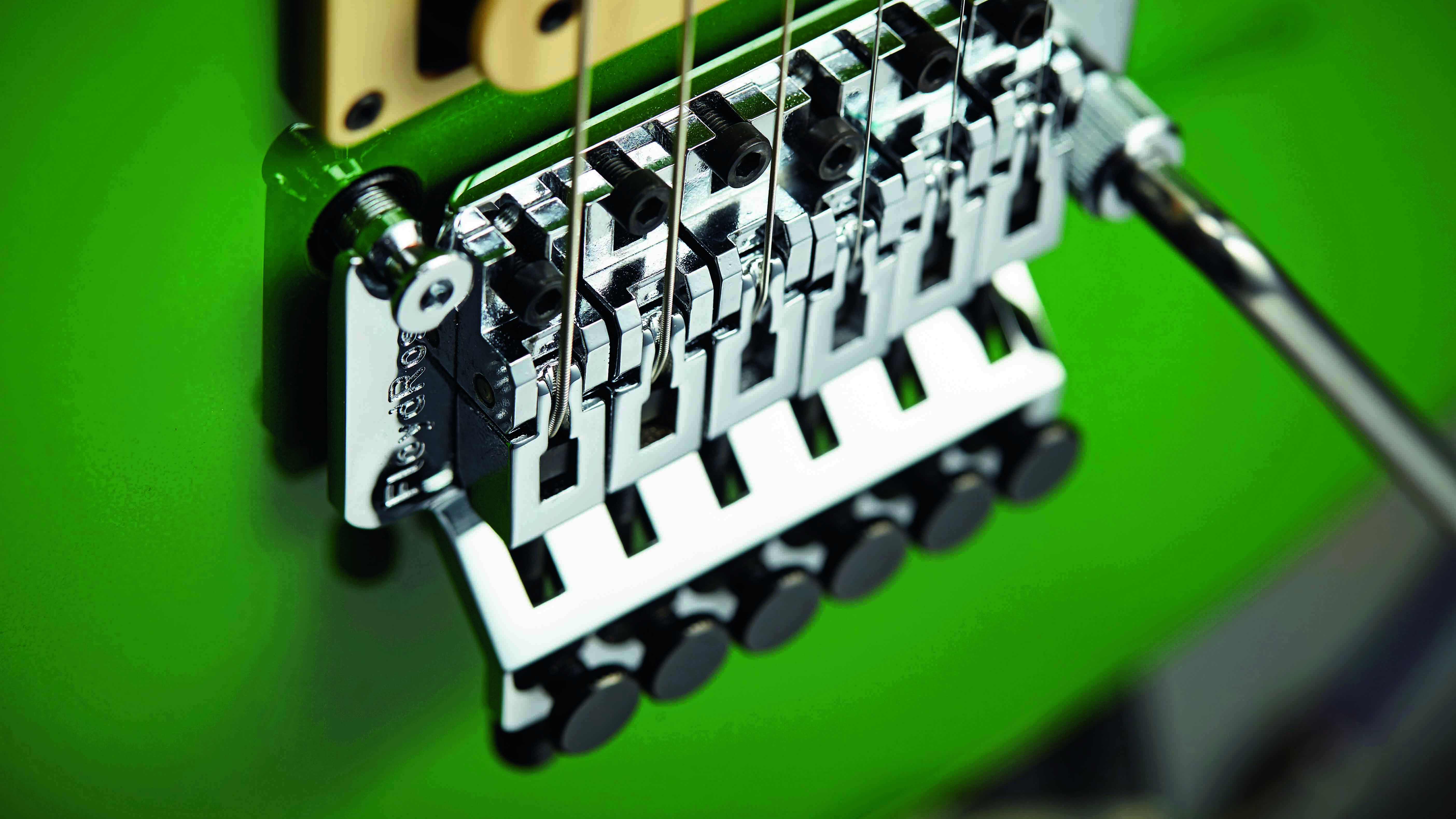
Restringing a Floyd Rose vibrato is one of the most fiddly jobs a guitarist can do, and while some faffing is unavoidable, there is one annoying job you can spare yourself if you’re in a rush. Instead of cutting the ball-ends off your strings to feed them into the vibrato, simply feed the strings backwards so that the ball-end is up at the tuners. This may look ugly, but it saves time and hassle!
Get the MusicRadar Newsletter
Want all the hottest music and gear news, reviews, deals, features and more, direct to your inbox? Sign up here.
5. Intonate yourself
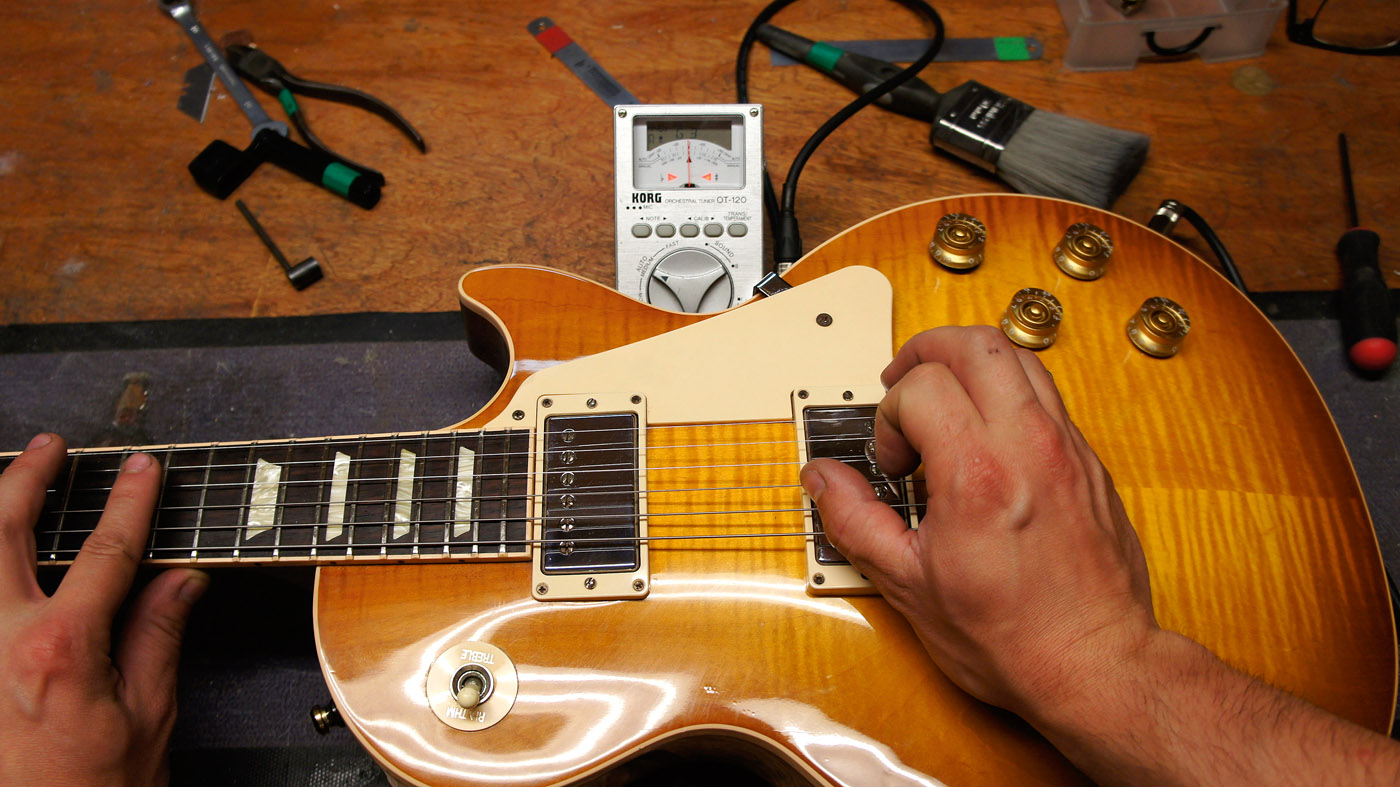
Having your intonation right is vital – without it chords and riffs at the dusty end will just sound bad! Thankfully, it’s a simple enough to do yourself, provided your electric has adjustable saddles.
Get your guitar and a guitar tuner, then play a harmonic at the 12th fret. Compare the harmonic’s pitch to the note produced when you fret it normally – if it’s sharper, move the saddle backwards slightly, if it’s flatter, move it forwards (remember FFF: fret, flat, forward). Repeat for the other strings and you’ll be intonated perfectly!
6. Snip your strings without clippers
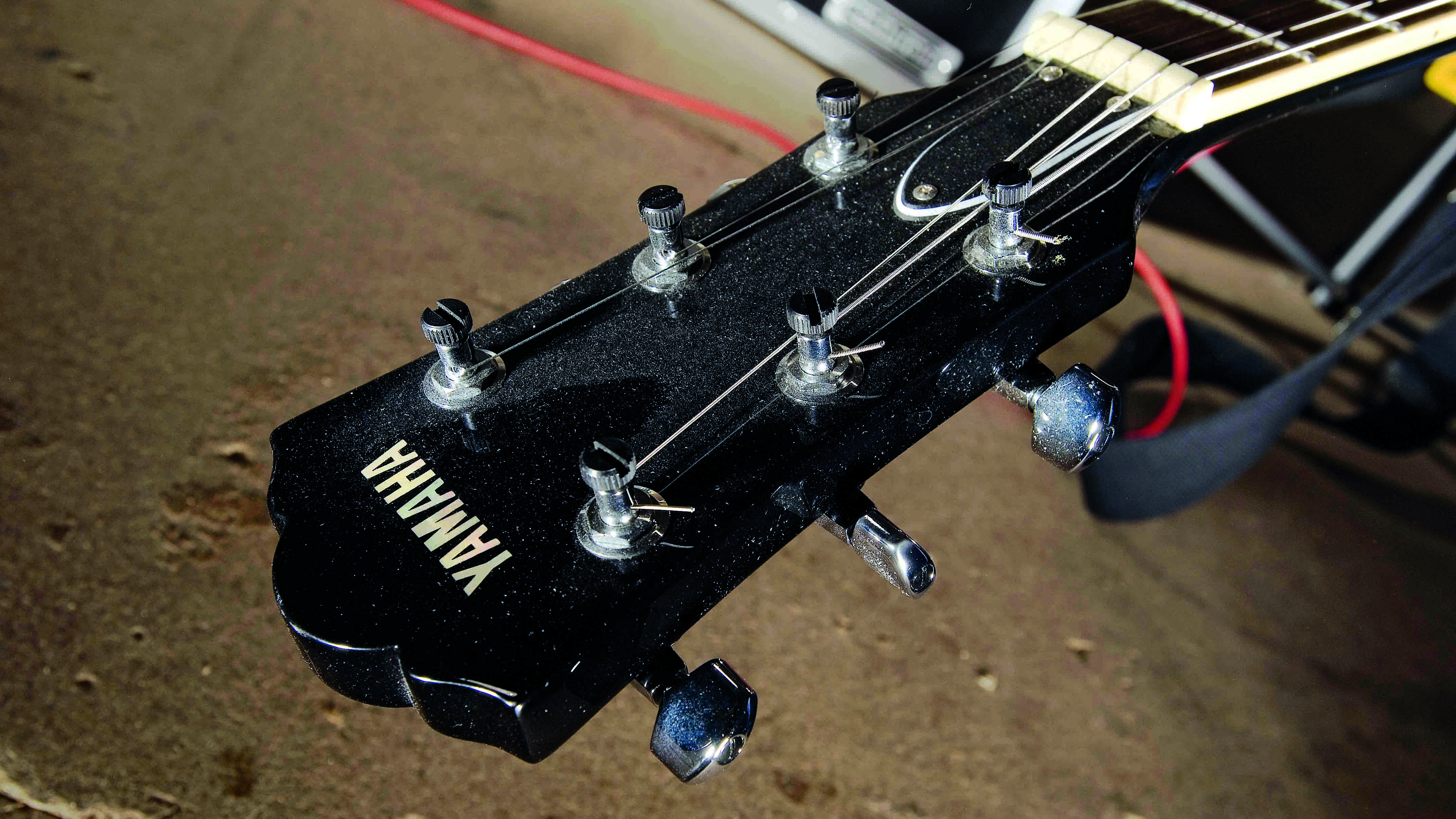
Okay, you’ve restrung your guitar but there are no clippers to be found. All is not lost - you can clip your strings with nothing more than your hand and some elbow grease. Firstly, take your loose bit of string and bend it against the machinehead so that it bends sharply against the string hole. Then bend the it back and do the same the opposite way.
Repeat this a few times until the string snaps, and repeat. This is much easier with the higher strings, wound ones can take some elbow grease, but it will work – it also clips them right at the tuner, meaning no more sharp ends to potentially stab you!
7. Make strings last longer
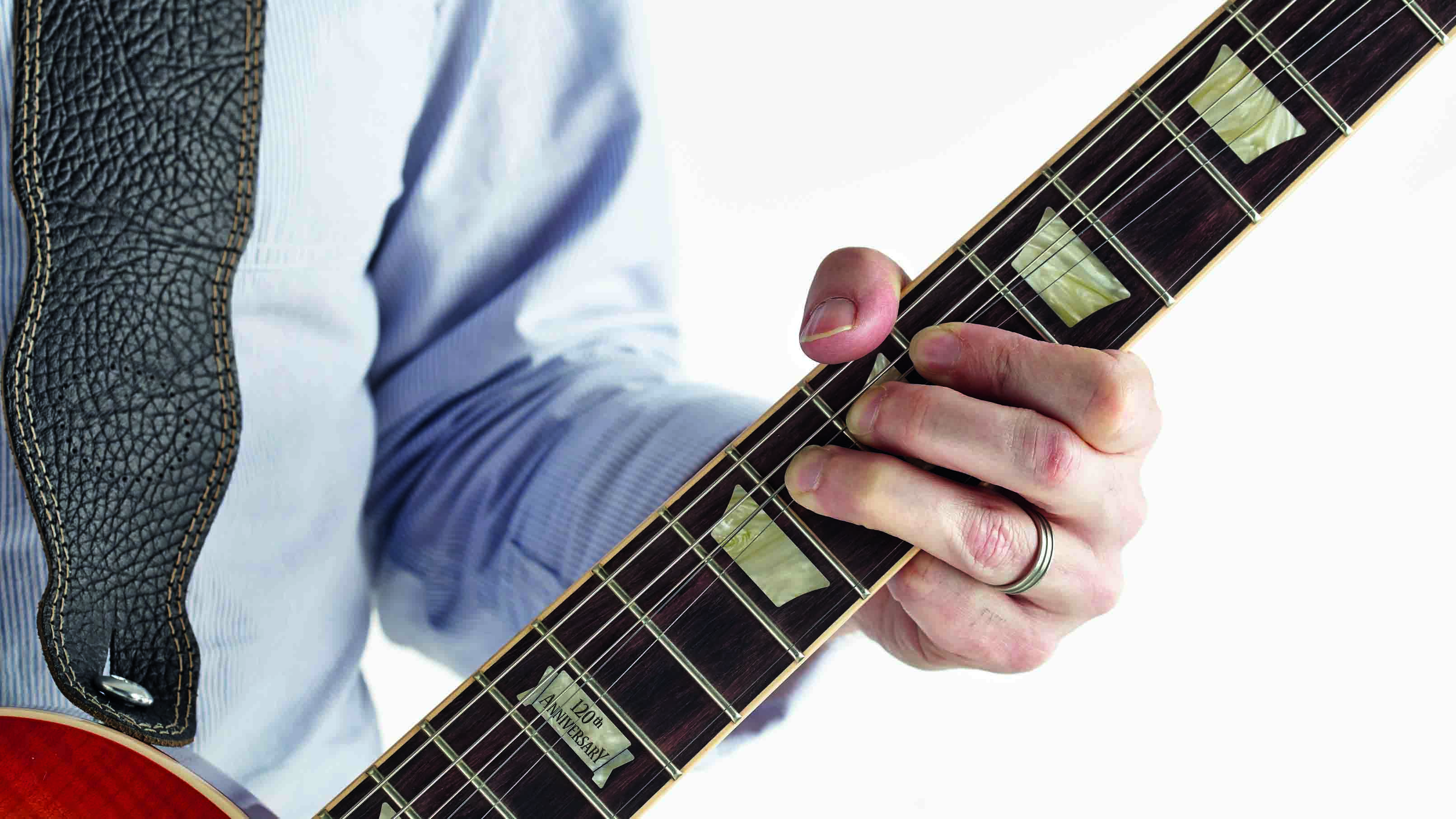
To a greater or lesser degree, we all sweat from our hands when we play guitar, and over time if left untouched, this will corrode your strings into a dull, lifeless mess. So, whenever you finish playing, take a dry cloth and rub down your strings to get rid of any moisture, and notice how your strings now stay bright and zingy for longer.
If you want to be extra conscientious, try washing your hands before you play, too!
8. Get new strings in tune quicker
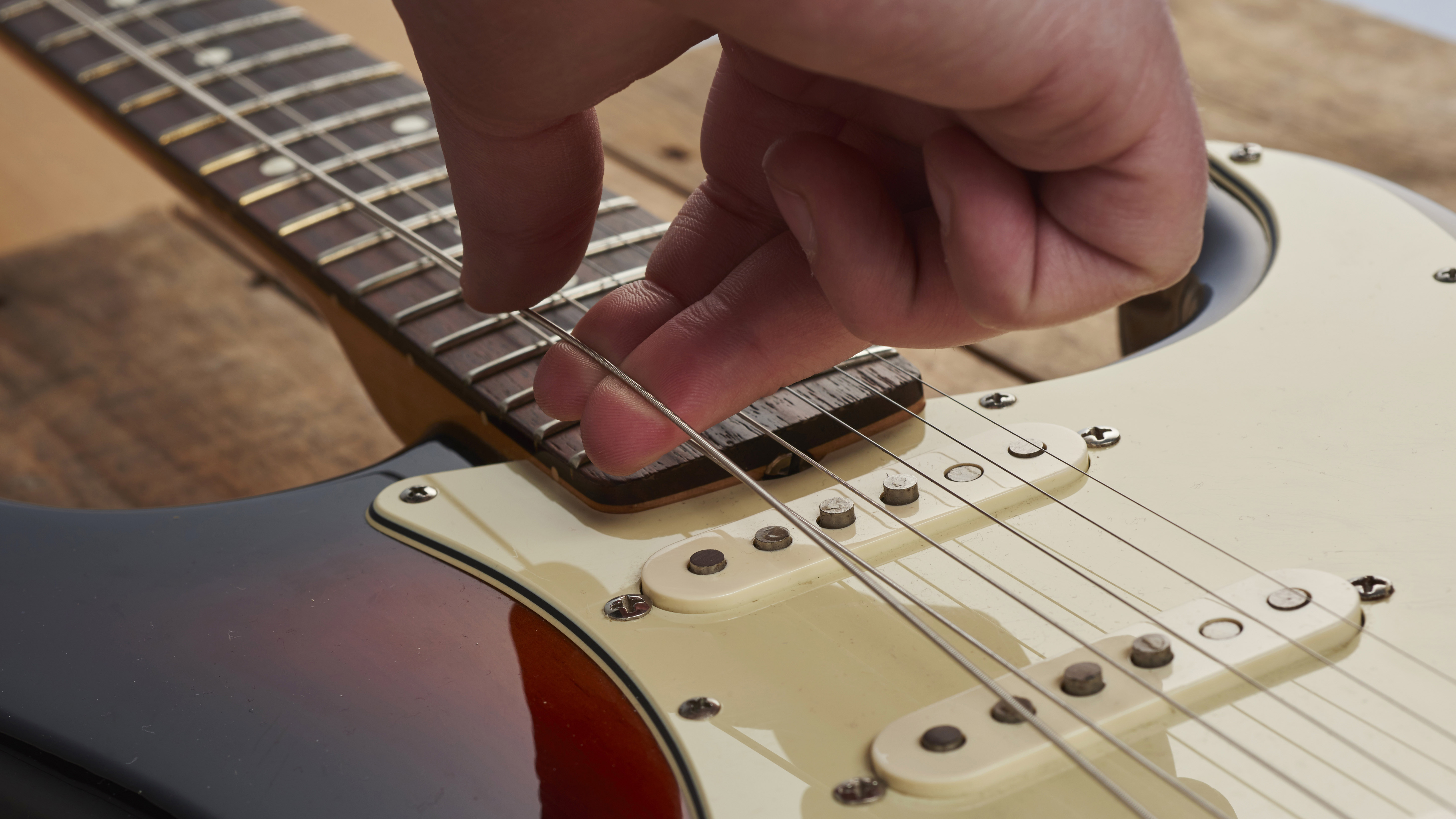
How often have you restrung a guitar only to find that the damn thing won’t stay in tune properly? Well, grasshopper, that’s because strings need to stretch and settle for a bit. Annoying, but good news – you can speed the process up yourself easily!
Starting with the low E string, simply grip the string about half way along its length, and pull it up off the fretboard – not too much, it’s not a bow and arrow, just until you feel it get taught – release, and repeat!
Do this a few times on all your strings, and you’ll find your tuning much more stable.
9. Set pickup heights
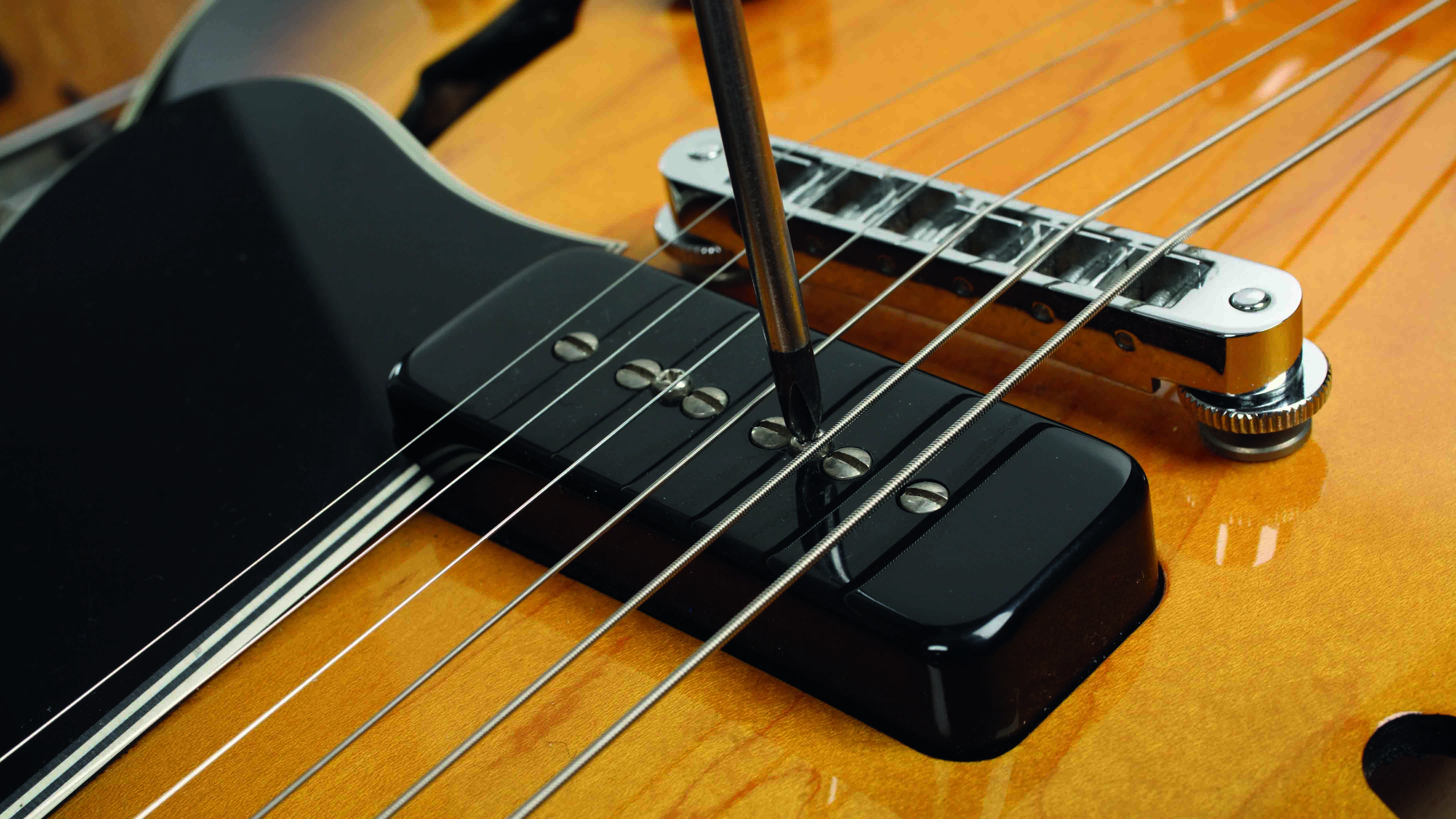
To get the best out of your guitar, the pickups need to be set at the right height – the closer they are to the strings, the louder they’ll be, but that’s not what it’s all about. Humbuckers are the simplest – fret the top and bottom E strings at the final fret and using a ruler, adjust the humbucker’s side screws until treble and bass sides both sit evenly 2.5mm beneath the fretted strings.
Single-coils are more complicated – Strats should be adjusted to sit with the treble side slightly higher than the bass for a good tonal balance.
Fret the two outer strings at the final fret, then adjust the pickups so the polepiece tops sit 2.5mm and 3.5mm from the treble and bass E strings respectively. One thing to watch out for with single-coils is wolf notes – these occur when the pickup’s magnetic field is too close to the string’s field of movement, preventing it from vibrating naturally. If you hear these, back off!
10. Trim strings perfectly
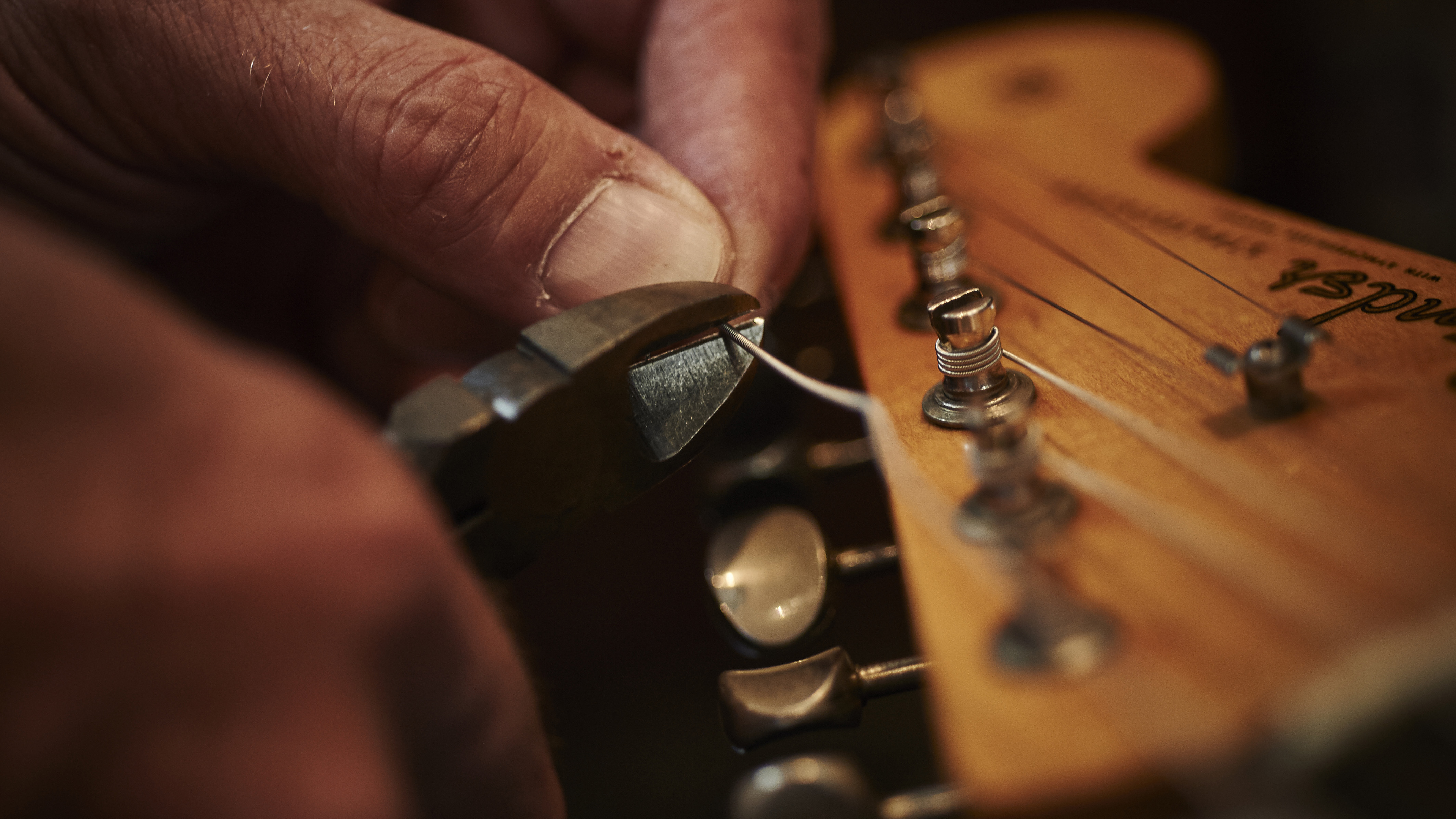
Knowing how many winds you need is all well and good, but how do you do it right? Well, if you have a Fender-style six-in-a-line headstock you trim your strings to the right length before you even start winding and still get the right number of turns. It simple really – as you fit each string on the headstock, simply measure your excess to the length of the next string’s tuning post and then clip the rest off before winding it on.
Of course, this trick won’t work with a three-a-side ’stocks…
Learn more: How to set up your guitar: a DIY guide
Total Guitar is Europe's best-selling guitar magazine.
Every month we feature interviews with the biggest names and hottest new acts in guitar land, plus Guest Lessons from the stars.
Finally, our Rocked & Rated section is the place to go for reviews, round-ups and help setting up your guitars and gear.
Subscribe: http://bit.ly/totalguitar










